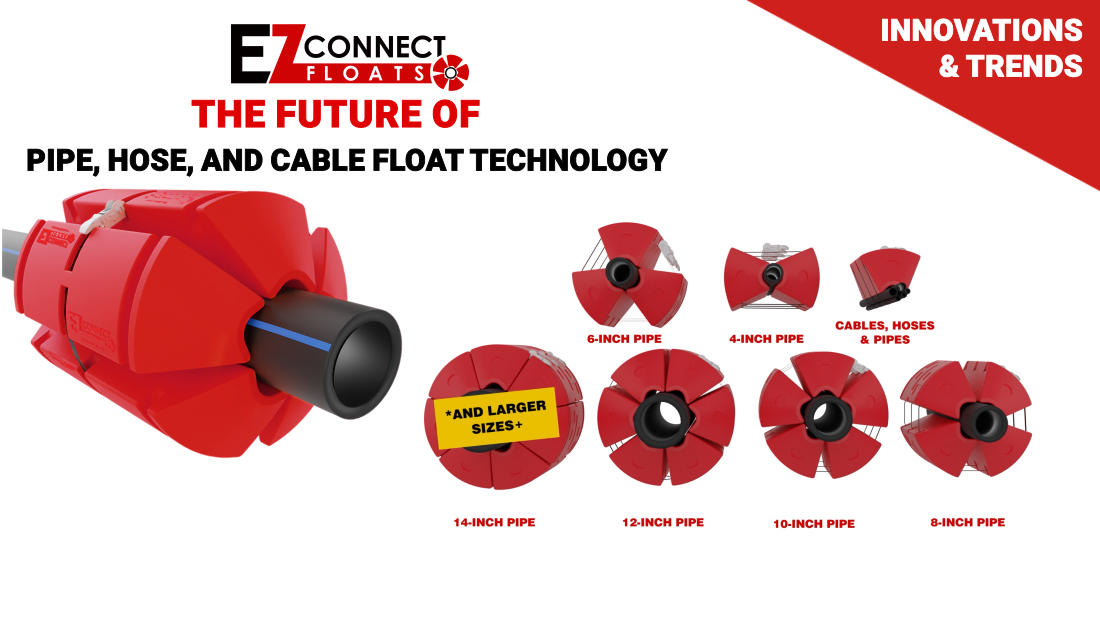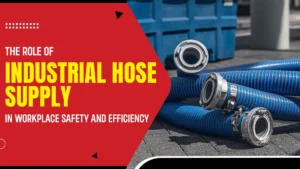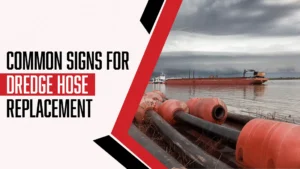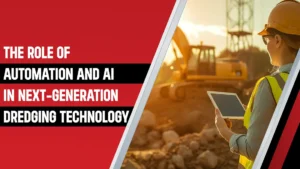
The Future of Pipe, Hose, and Cable Float Technology
Specific components often need to be noticed in the expansive domain of marine industries despite their critical role in supporting underwater infrastructure. Pipe, hose, and cable floats are one such example. These unassuming flotation devices are instrumental in ensuring the stability and functionality of submerged pipes, hoses, and cables, yet more prominent marine technologies often overshadow their significance. However, as we navigate towards a future marked by innovation and sustainability, examining the evolving landscape of pipe, hose, and cable float technology becomes increasingly essential.
Current Float Technologies
Pipe, hose, and cable floats have historically played a crucial role in marine industries by providing buoyancy and protection for submerged infrastructure. Traditionally constructed from materials like polyethylene or polyurethane, these floats have been relied upon to support pipes, hoses, and cables in various underwater applications. However, their functionality has been limited by inherent drawbacks.
Disadvantages
The disadvantages associated with traditional pipe, hose, and cable floats are as follows:
- Susceptibility to Degradation and Damage: Exposure to harsh marine environments can lead to degradation, weakening the structural integrity of floats and increasing the risk of failure.
- Limited Durability: Conventional pipe floats may require frequent maintenance and replacement due to wear and tear, contributing to operational downtime and increased costs.
- Environmental Concerns: The predominant use of non-biodegradable materials in hose floats construction has raised significant environmental concerns, particularly regarding plastic pollution in marine ecosystems.
- Challenges in Recycling and Disposal: Disposal of used pipe floats presents challenges, as traditional materials often need to be more easily recyclable, leading to increased landfill waste and environmental impact.
New Trends and Technology in Pipe, Hose, and Cable Floats
Recent advancements in pipe, hose, and cable float technology have introduced innovative solutions to address these challenges:
- Advanced Materials: The exploration of advanced materials such as carbon fiber composites and bio-based polymers offers improved durability, corrosion resistance, and reduced environmental impact compared to traditional materials.
- Intelligent and Connected Floats: Integration of sensors, communication modules, and data analytics capabilities enables real-time monitoring of buoyancy, environmental conditions, and structural integrity. This facilitates predictive maintenance, optimizing operational efficiency and reducing downtime.
- Sustainable Solutions: Developing recyclable hose floats systems and eco-friendly coatings addresses environmental concerns by minimizing plastic pollution and promoting responsible disposal practices. These sustainable solutions align with growing demands for eco-conscious alternatives in marine industries.
Advantages of Advanced Float Technology
The adoption of advanced float technology offers several advantages over traditional floats:
- Enhanced Durability and Longevity: Advanced materials and design innovations result in more resistant pipe floats to degradation and damage, reducing the need for frequent maintenance and replacement.
- Improved Operational Efficiency: Smart and connected cable floats enable proactive maintenance and optimization of underwater infrastructure, leading to improved reliability, reduced downtime, and increased cost savings.
- Reduced Environmental Impact: Eco-friendly materials and practices minimize the environmental footprint of pipe floats, contributing to the preservation of marine ecosystems and aligning with sustainability goals.
- Greater Adaptability: Advanced hose floats technology allows for greater adaptability to diverse applications and operating conditions, optimizing performance and efficiency in marine environments.
Conclusion:
The future of pipe, hose, and cable float technology is marked by innovation, sustainability, and enhanced performance. By embracing advanced materials, intelligent technologies, and eco-friendly practices, we can overcome the limitations of traditional floats and usher in a new era of efficiency and environmental responsibility in marine industries. Together, let us navigate towards a brighter, more sustainable future for pipe, hose, and cable floats, ensuring the resilience and preservation of our marine ecosystems for generations to come.
Have Questions?
Get in touch with us now!
Related Blogs

The Role of Industrial Hose Supply in Workplace Safety and Efficiency
In high-stakes industries such as oil and gas, mining, manufacturing, dredging, and defense, industrial hoses serve as vital connectors in daily operations. Whether transferring hazardous

Common Signs For Dredge Hose Replacement
Dredge hose is an essential component in mining, oil and gas, and heavy industries, where it is used to transport materials such as sediment, slurry,

The Role of Automation and AI in Next-Generation Dredging Technology
Dredging technology has undergone a quiet but powerful transformation over the past decade. A purely mechanical process, which included heavy machinery, manual supervision, and reactive
